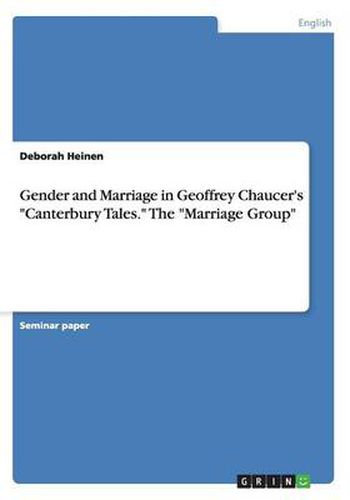Readings Newsletter
Become a Readings Member to make your shopping experience even easier.
Sign in or sign up for free!
You’re not far away from qualifying for FREE standard shipping within Australia
You’ve qualified for FREE standard shipping within Australia
The cart is loading…






Seminar paper from the year 2014 in the subject English Language and Literature Studies - Literature, grade: 2,3, University of Bonn, language: English, abstract: That he is a poet concerned with gender issues is obvious: almost every narrative in the Canterbury Tales deals with how the sexes relate to one another or envision one another (Laskaya 1995: 11). Of course Laskaya talks about Geoffrey Chaucer and his famous work The Canterbury Tales from the 14th century, which is an unfinished collection of tales told by a group of pilgrims. Even though Laskaya accounts The Canterbury Tales as rich in gender issues, this work concentrates on four specific prologues and tales, the so called Marriage Group . The work in hand is supposed to discuss gender-specific aspects and gender-relations in the context of medieval society using the example of Chaucer’s Canterbury Tales .
$9.00 standard shipping within Australia
FREE standard shipping within Australia for orders over $100.00
Express & International shipping calculated at checkout
Seminar paper from the year 2014 in the subject English Language and Literature Studies - Literature, grade: 2,3, University of Bonn, language: English, abstract: That he is a poet concerned with gender issues is obvious: almost every narrative in the Canterbury Tales deals with how the sexes relate to one another or envision one another (Laskaya 1995: 11). Of course Laskaya talks about Geoffrey Chaucer and his famous work The Canterbury Tales from the 14th century, which is an unfinished collection of tales told by a group of pilgrims. Even though Laskaya accounts The Canterbury Tales as rich in gender issues, this work concentrates on four specific prologues and tales, the so called Marriage Group . The work in hand is supposed to discuss gender-specific aspects and gender-relations in the context of medieval society using the example of Chaucer’s Canterbury Tales .